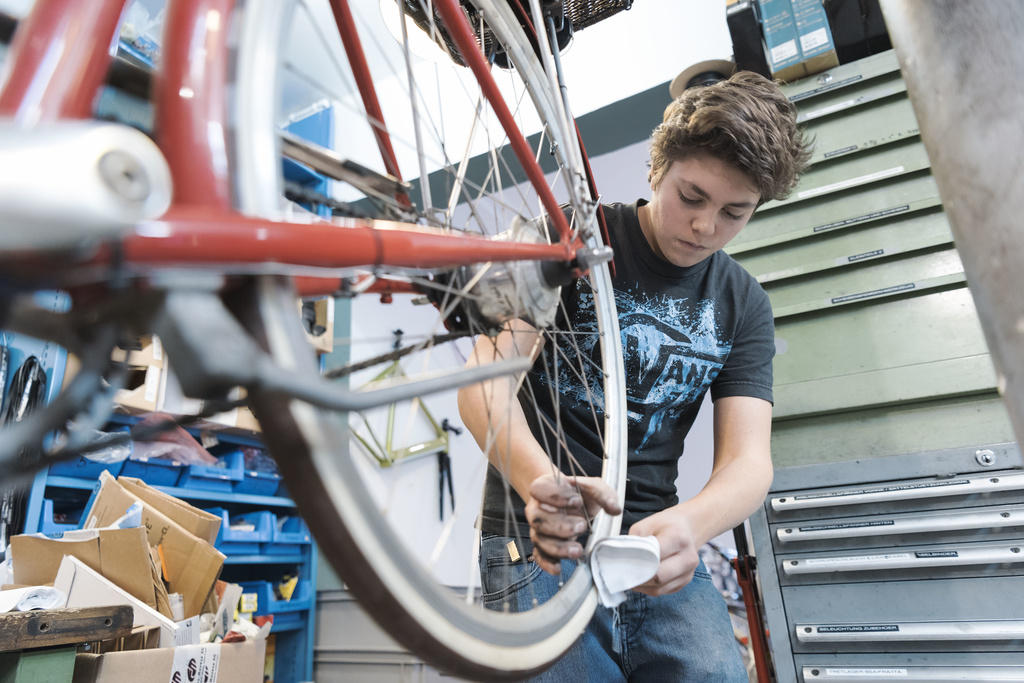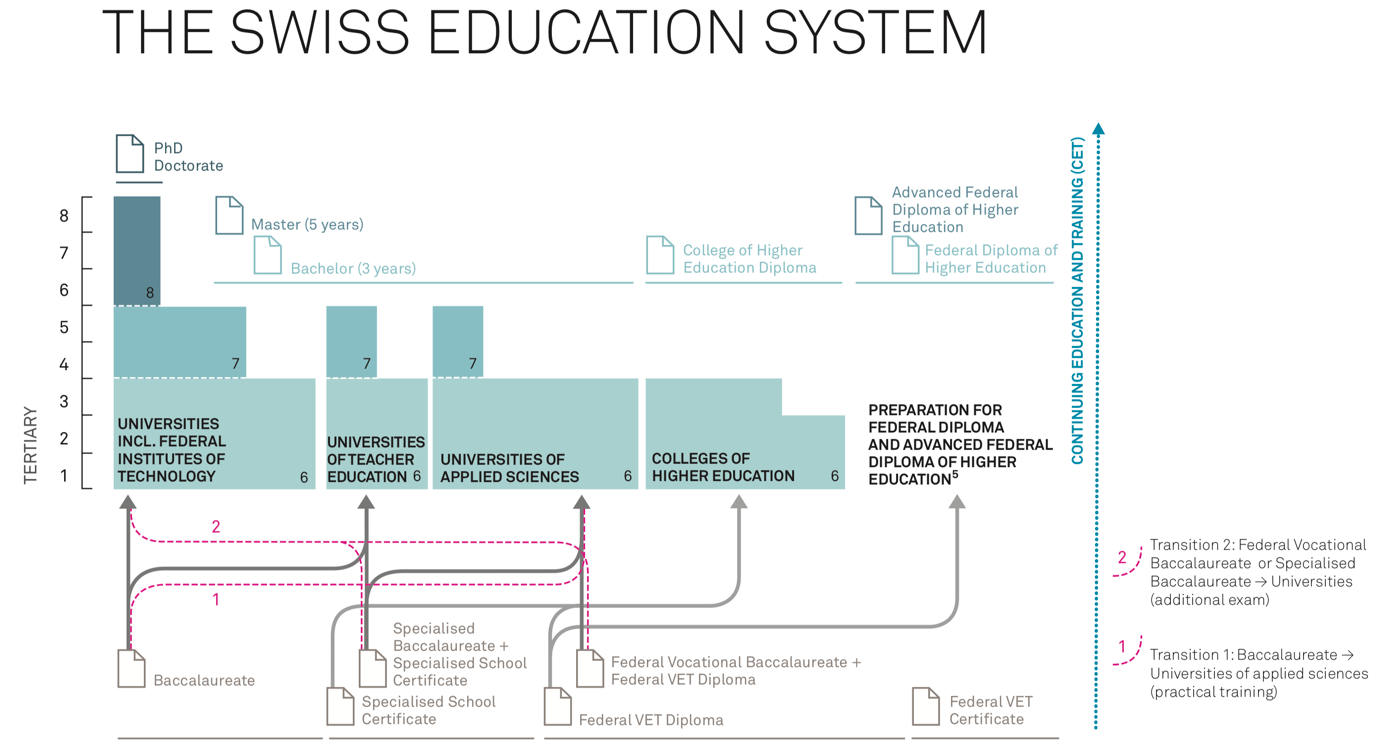Can you study after an apprenticeship?

In Switzerland, two thirds of young people do an apprenticeship. But what if, as readers ask, a person wants to study later on? Is this possible?
This summer we’ve been asking readers to submit their questions on Swiss education: so far, we’ve answered the queries on teaching with a foreign qualification.
Now we are turning our attention to another popular question; namely studying after an apprenticeship. Vocational training is a cornerstone of the Swiss education system. Apprenticeships are normally dual-track: 1-2 days in a vocational school and the rest on-the-job-training in a company. A 3-4 year course gets you a Federal Vocational Education and Training (VET) Diploma. It’s what most young people do.
+ More information here on how apprenticeships work
Pupils generally have to decide at around 14 whether to do an apprenticeship or to do a regular baccalaureate at a baccalaureate schoolExternal link, the normal route to university.

More
Are 14-year-olds ready to make a career choice?
But, if a student does an apprenticeship can they then go to university to study?
The answer is yes, but you need to gain the federal vocational baccalaureateExternal link first. This will get you in to one of the eight Swiss Universities of Applied Sciences (UAS). These are the more practically-oriented universities that do applied research.
Preparatory courses for vocational baccalaureates are normally taught at vocational schools. You can either do the course 1 alongside your apprenticeship, usually meaning some extra time in the classroom. Or course 2 after you have done your apprenticeship (studying full or part-time). This dual diploma/baccalaureate path is known as the “Royal Route” (Königsweg).
To attend one of the ten cantonal universities or one of Switzerland’s two top-rankedExternal link federal institutes of technology (ETH Zurich and EPFL Lausanne), vocational baccalaureate holders will have to pass the University Aptitude TestExternal link (UAT) as well. The preparatory course for this takes a year. Note: some subjects, like medicine, can require an additional entry test.

More
From ETH to the University of Geneva: understanding Switzerland’s university system
Do lots of people do the vocational baccalaureate?
With a growth rate of 15%, federal vocational baccalaureates account for 40% of all baccalaureates (including specialised baccalaureatesExternal link, the third and least common type), according to the Swiss Education Report 2018External link. Currently, around 25% of those who finish their VET diploma also acquire a vocational baccalaureate. This, the report says, has a “socially balancing function in one sense, being primarily acquired by academically stronger young people from socially disadvantaged households”.
However, the transition to higher education after the federal vocational baccalaureate is quite low, the report states. For example, in 2014, 14,222 people did the exam, but only 7,231 then began a UAS course. More men tend to go on to study at a UAS than women. The overall low transition rate might be explained by the fact that vocational baccalaureate holders can expect higher wages on completion of their training than baccalaureate school leavers who still have to do some training, the report adds.
Not that many people do the UAT: there were 959 passes in 2016. Most will go on to study a subject at university that is different to their vocational qualification, the report says.
Apprenticeship to uni: what it’s like

One person who has made the change from apprenticeship to university is Brahim AaktiExternal link, a 37-year-old local councillor in Emmen, near Lucerne. Aakti first did an apprenticeship in design engineering at lift maker Schindler, while also studying for a vocational baccalaureate. This meant two days in school versus the 1.5 days the other apprentices were doing. But he felt it was better to do it this way round than with extra years after the apprenticeship.
“Basically, for me it was important to have something in hand,” Aakti told swissinfo.ch. “With the apprenticeship, I knew that if I was sick of school afterwards, I could go and work and then study later on or even not study at all.”
You are also very young when you decide on your apprenticeship, he explained. The vocational baccalaureate would allow for a change in career direction later on, if wanted.
In the event, Aakti didn’t change direction but went on to study mechanical engineering at a the Lucerne UASExternal link. During this time, he worked Monday to Thursday at the firm Rosen Technology, and then attended his UAS courses on Thursday evening, Friday and Saturday morning. This later led to a teaching assistant position at the institution in the field of fluid dynamics.
Realising he lacked some of the theorical basics in maths and physics, Aakti decided to take a part-time Masters at the prestigious ETH ZurichExternal link, which he finished in 2012.
+ ETH Zurich moves into the top six universities worldwide
There was no need to take a UAT to get in, but he had to show good marks from the UAS and ensure that his English was up to scratch. Once accepted, he was expected to take extra courses in certain areas to catch up on the theory.
Just do it!
Aakti confirms that this path is not one followed by many. He estimates around 2% of those on his ETH Zurich course were from a UAS. Moving from a UAS to university takes a lot of work, he said, especially as you are going from a more practical-based environment to a more theorical one, but it is certainly very rewarding. “With this combination, you are really prepared for any job in industry,” he said.
Aakti moved into local politicsExternal link in December 2018, but he does not regret his dual path. His advice is: “do it!”.
You can also read about IT apprentice Nicolas Ettlin’s path to university and why he chose to do it in this story.
For more education questions, answered stories, head to our education dossier.
Widening options
The vocational baccalaureate was introduced in present form on a national scale in 1994External link to open up vocational training. Before that, the decision to do an apprenticeship often led to a kind of “dead end”, as one official put it, if you wanted to studyExternal link later on, requiring a long detour (and determination). The idea of the new qualification was to turn out enough highly-qualified personnel and offer strong students a viable alternative to the regular baccalaureate
However, work is not finished in this area. In 2018, a campaignExternal link, with its own special siteExternal link, was launched to promote the vocational baccalaureate among young people and their parents.

In compliance with the JTI standards
More: SWI swissinfo.ch certified by the Journalism Trust Initiative















You can find an overview of ongoing debates with our journalists here . Please join us!
If you want to start a conversation about a topic raised in this article or want to report factual errors, email us at english@swissinfo.ch.